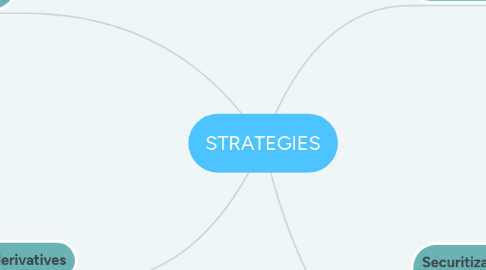STRATEGIES
by Miss Champion

1. Proprietary trading and investment in non traditional assets
1.1. increased level of trading of securities within the bank’s portfolio that is, buying and selling securities such as government bonds.
1.2. anks established specialized off balance-sheet vehicles and subsidiaries to engage in investments and investment strategies
1.3. Hedge funds, private equity funds, and venture funds are investment companies that have broad powers of investing
2. Increased use of derivatives
2.1. transfer credit risk on portfolios of bank loans or debt securities facilitated a net overall transfer of credit risk from banks to non-banks
2.2. CDSs allow banks and other financial institutions to alter the risk/return trade-off of a loan portfolio without having to sell or remove loans from the bank’s balance sheet
2.3. may allow a bank to avoid adverse timing of tax payments as well as liquidity problems related to buying back a similar loan at a later date if risk/return considerations so dictate
2.4. By selling CDSs, the insurance company can benefit from the return paid for credit risk exposure without having to actually commit current resources to purchasing a loan
3. Syndication of loans
3.1. Bank originates a commercial loan, but rather than holding the whole loan, the originating bank sells parts of the loan or syndicates it to outside investors
3.2. 3 ways: Firm commitment (underwritten) deals Best efforts deals Club deals.
3.3. Most syndicated loans are floating rate loans tied to a market benchmark such as sthe London Interbank Offered Rate (LIBOR)
3.4. Syndicated leveraged loans are often pooled together and securitized in the form of CLOs.
3.5. Once the terms of are set, they cannot be changed without the agreement of the members of the loan syndicate
4. Securitization of nonstandard mortgage assets
4.1. change in strategy from a traditional bank’s policy of holding the loans it originates on its balance sheet until maturity
4.2. By packaging and selling loans to outside parties, bank removes considerable liquidity, interest rate, and credit risk from its asset portfolio
4.3. By removal of assets from the balance sheets of the banks by creating off-balance-sheet subsidiaries
4.4. SIV is created where it is a structured operating company that invests in assets that are designed to generate higher returns than the SIV’s cost of funds.


